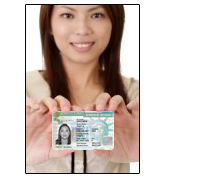Clients and Blog readers are often asking about the Conditional Green Card, what conditions? Very Confusing subject. In this Blog Article, Marie Puertollano from our office covers this issue.
An immigrant can obtain a Permanent Resident Card, also called “green card,” through marriage to a US citizen. The green card is conditional if the marriage was less than two years old on the day the applicant (the immigrant) was given permanent residence.
The conditional green card is valid for two years only. The applicant must file an I-751 application before the green card expires. Never count on the USCIS to remind you of the two year deadline.
The immigration services will grant removal of the conditions on residence only if the applicant can prove that the marriage was a good faith marriage. If the immigration services determine that the marriage was entered into for immigration purpose, and not because you love each other, the case will be denied and the applicant will become removable from the United States.
When to file Form I-751?
A conditional green card starts to be valid on the day when permanent residency is granted, not on the day of the wedding. The conditional green card expires two years after. These two dates are clearly mentioned on the green card itself.
The applicant must file the I-751 application within ninety (90) days BEFORE the expiration of your green card. For example, if you were granted conditional resident status on April 15, 2011 through marriage, your green card will expire on April 15, 2013. Therefore, you must request the removal of the conditions on residence between January 15, 2013 and April 14, 2013.
Do not send your application before the 90 days window or the USCIS will return it.
Do not file after the 90 day window either. As soon as the two years of validity have passed and the conditional green card expires, under INA §216(c)(1), the immigration services will order removal from the United States against you. The USCIS will send you a notice stating that you have failed to remove the conditions, and you will also receive a Notice to Appear at a hearing. In very rare cases, under INA §216(d)(2)(B), the immigration services might excuse late filing if you can prove good cause and extenuating circumstances.
What kind of documents should I provide to prove a good faith marriage?
For joint petition:
Many evidence can be used to prove a good faith marriage: (1). joint lease agreement, (2). joint tax return, (3). bills showing both of your names, (4). joint bank account, (5). joint insurance, (6). pictures of the couple together, (7). affidavits from family and friends who have known the couple since their marriage, (8). birth certificate of your children, (9). cards and letters addressed to both of you… Do not send originals, only copies, unless otherwise stated.
For divorce cases:
If the marriage of the US citizen and the permanent resident are separated, a waiver is available and the permanent resident will file alone the I-751 petition.
The applicant needs to provide a copy of the final divorce decree or annulment record. Provide as much evidence as possible about the period of relationship before the divorce. The list of documents mentioned above for joint petition is valid for waiver cases. These documents include such items as bills with both of your names, pictures of the couple together, or affidavits from family and friends who know that you got married for love.
Other waivers:
A waiver is also available if you had a good faith marriage but the US citizen died. Another waiver exists if you have remained in a good faith marriage, but have been battered or subjected to extreme cruelty by the US citizen or permanent resident spouse.
I. What happens after sending the application?
First, the applicant will receive an I-751 receipt notice extending your conditional residence for one more year. During the one year extension, the applicant is authorized work and travel. Then, usually within 30 days, the applicant will receive a notice for biometrics (fingerprint and picture) appointment.
If necessary, the USCIS may transfer the case to the local office and request an interview. Interviews are more likely to happen if very few evidence are provided or in waiver cases.
The USCIS tries to determine the I-751 cases within six months. If your petition is approved, the applicant will be granted a 10-year green card. If you need assistance with your I-751 case, feel free to contact us for assistance.

 Visa Lawyer Blog
Visa Lawyer Blog

